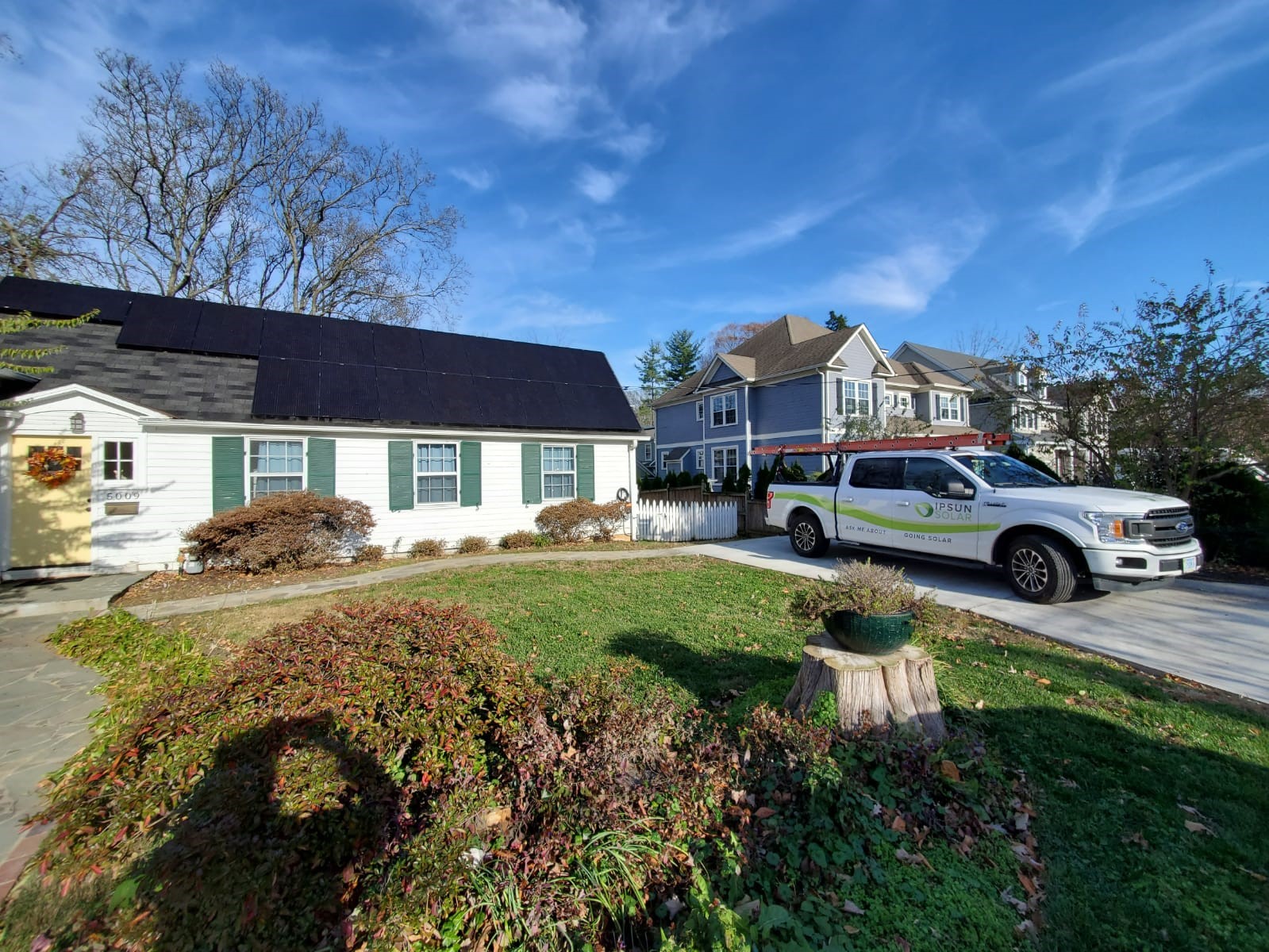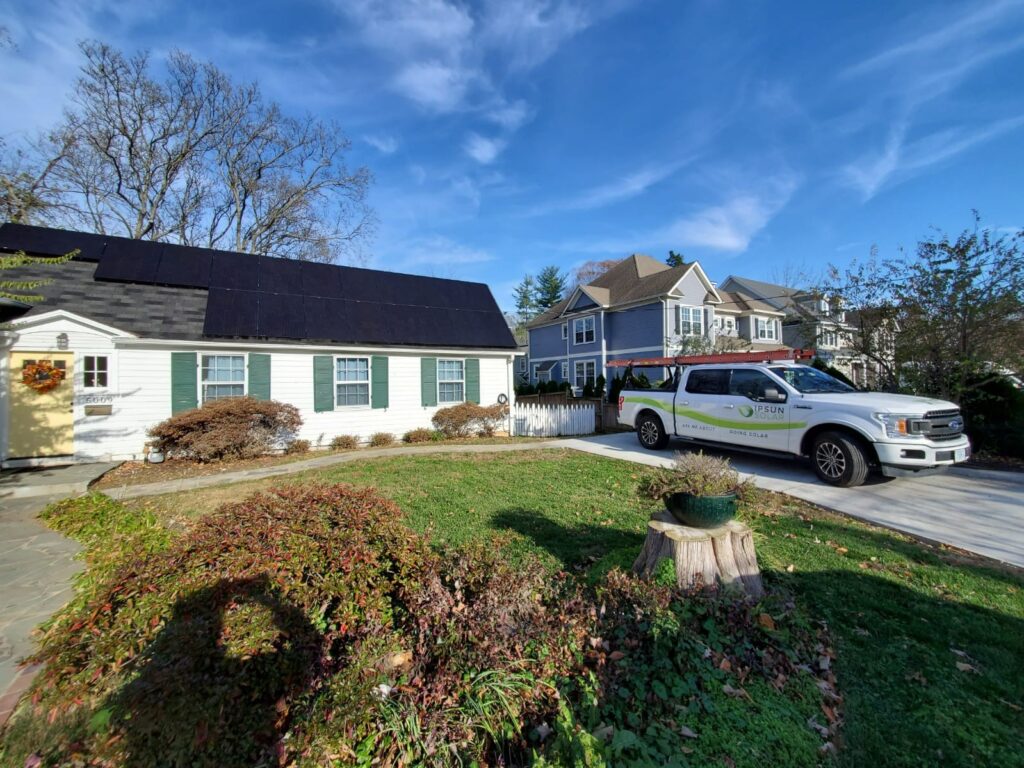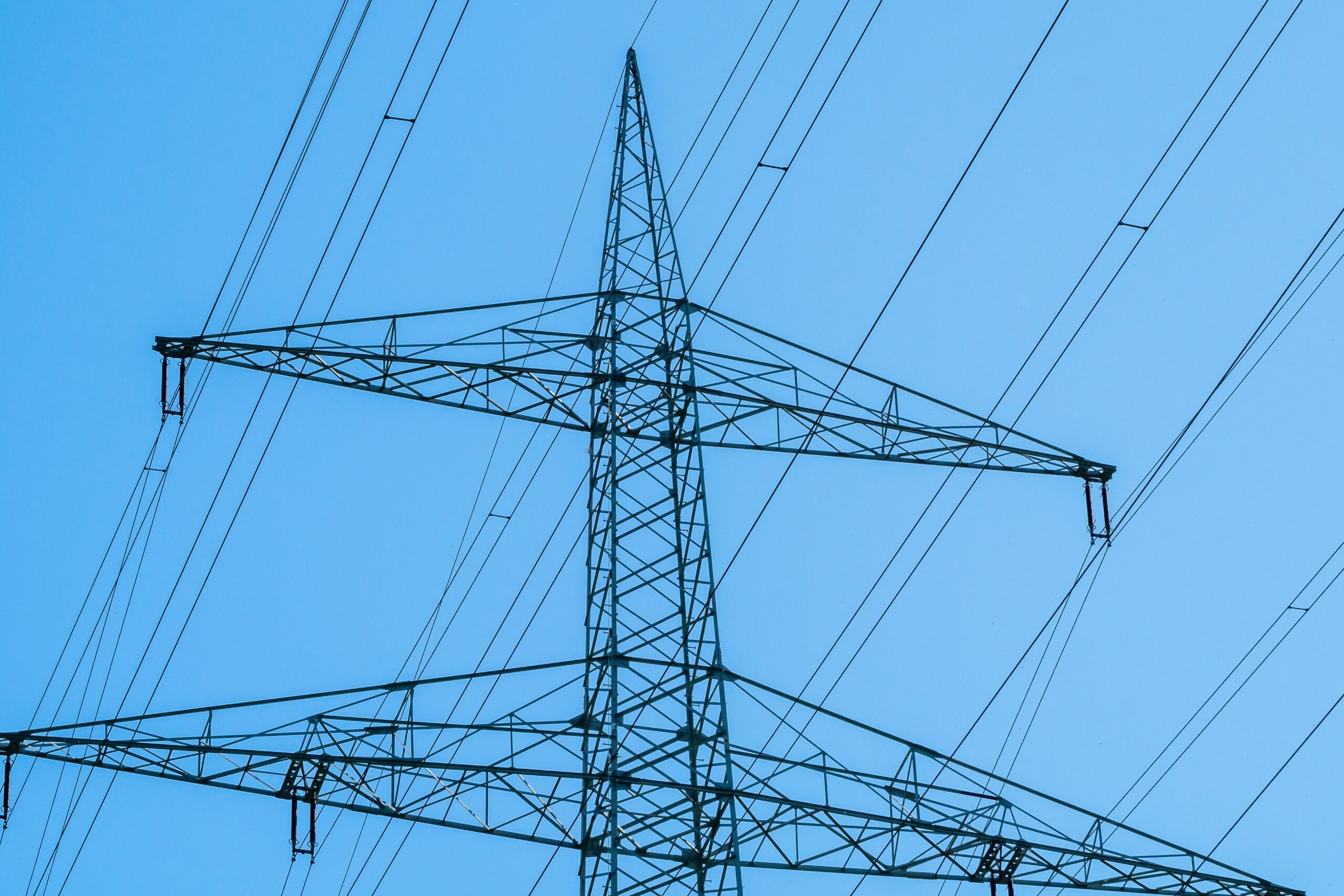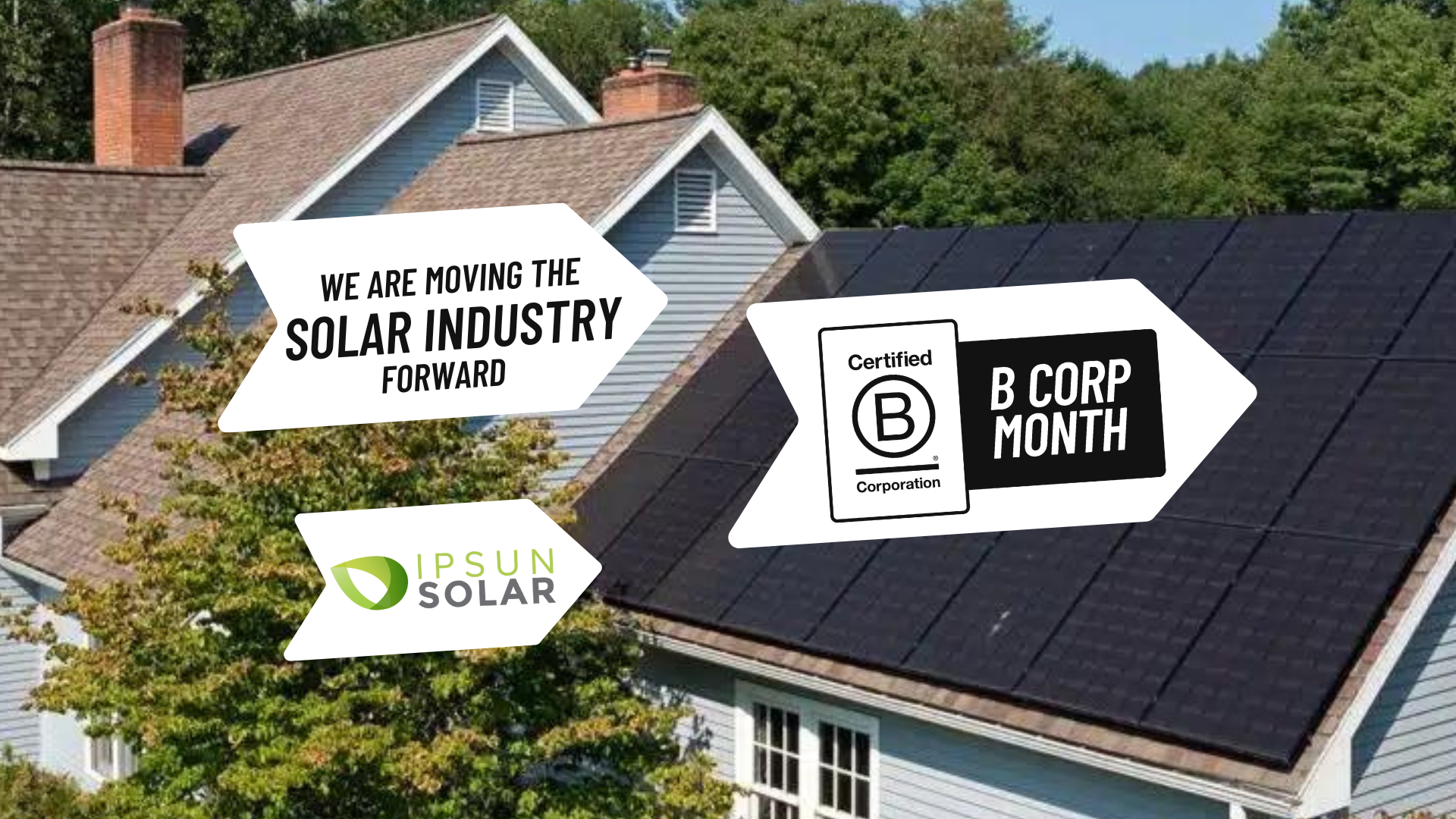You’re thinking about going solar. Home solar system cost is probably the first thing on your mind. Across the country, some solar systems cost a little more or a lot more to install than others, but the price ranges don’t mean much out of context, so let’s break down every part of the cost.
After all, a thorough understanding of where solar costs come from, your funding options, and exactly how homeowners see those dollars come back to them over time, will basically guarantee you will have a positive experience going solar!

Price per Watt
A starting point for all solar system costs is an estimated price per Watt, an equation that relates the total cost of materials along with labor to the size of the system that you get. In the DC, Maryland, and Virginia region, the per Watt price in your quote may come in below or above the average national range, as your solar experts are tailoring it to suit the location’s needs. Factors that influence this price range include:
Brand of panels
Different brands offer very different panels and these differences are reflected in pricing.
In competition with each other, manufacturers offer panels capable of producing energy in different amounts, their rated wattage. Some brands make or assemble panels in North America for North American projects, while some do not. They also compete on warranty programs and networks and on the degradation rate of the panels once installed.
Even the pace of demand changes solar pricing, for example in the last 14 years solar panel technology prices have nearly halved as adoption grew!
Inverter
The solar inverter is a digital system that adjusts your solar energy to a form your home can use, while reporting its data via internet connection. Along with other components, your inverter or microinverters (a version which comes attached to each panel) can have an impact on your solar system price, however microinverters are great for the performance of your solar system over time because they can help your system deliver power from even a partially obstructed portion of your arrays.
Trending labor rates
Rates for labor in home services industries in your market may look very different than in other communities across the country. If construction is generally moving fast and rates are competitive, you may be looking at slightly higher rates for solar projects than in a slower market.
Project complexity
In the old days, many solar companies had trouble serving homes where they found atypical architecture. Homes featuring many roof planes where installers had to connect solar arrays were either disqualified or led to schedule delays or construction hold-ups. But now, experienced installers like Ipsun consider split-up roofs, steepness, and access regularly and are communicative with the customer about price adjustments.
Intuitively, a 4-kiloWatt solar system filling the roof of a compact, 2-bedroom ranch home in an inner suburb would cost about 1/4 as much as a 16-kiloWatt solar system spanning the roof of a sprawling, 5-bedroom home in an outer suburb. To be sure the system is an adequate size for the user, a good solar consultation will include a review of 1-2 years of monthly electric bill statements. Through net metering, the utility seamlessly tracks the value of any solar energy sent out onto the grid at times of surplus, and applies that automatically when the customer uses grid power again, like at night. There is no benefit to producing more solar energy year-round (from year to year) than the owner expects to use, because the utility deletes leftover energy credits accrued at the end of the year’s billing cycle, and that creates a ceiling for a maximum system size.
Cash customers may simply complete their payments by check as they come due, at convenient, agreed-upon milestones during pre-construction, construction, and completed operation of the system. But there are other ways of funding a solar energy system to help keep your household budget on track while you switch to solar.
Storage Savings
While it isn’t necessary to add battery systems to every solar install and leaving off the battery is one path to a lower project cost, a battery can deliver savings.
If the electric utility offers or requires residents to use a time-based pricing plan, there may be a clear reason to program their solar and battery to power their home when utility prices are on-peak and during off-peak times charge the battery and use cheaper grid power at home. This method is a win-win, helping the utility ease grid congestion and paying back the solar system’s cost faster. Keep in mind that this depends on the user and on utility programs which can change, which is more challenging to model during your solar consultation. Its easier to mentally consider if having reliable backup power has a financial benefit for you, and from there determine if about $10,000 per battery is worth including in your solar system cost.

Funding a solar system installation
Any good solar company will offer a variety of project funding methods to choose from. In many states, legislative solutions have also been enacted creating alternative funding mechanisms for customers who prefer a seamless approach.
Tax Credits and Incentives!
Once you’ve bought your solar installation, you are eligible to take a federal tax credit currently worth 30% of the cost. There is a 30% federal tax credit on energy storage as well, so battery customers enjoy this as long as the battery is configured to be solar-fed. Maryland has a $1000 solar rebate, up to $5000 battery tax credit and a state tax exemption on solar equipment.
Financing
Whereby an institution like Credit Human approves a loan or combination of loans to cover the expense of the solar installation cost. With a qualifying credit score, you’d see benefits including:
$0 down terms
Make early payments penalty-free: use your solar tax credit proceeds to pay down the principal, or decide to spend the value however you want
Amounts ranging from $12,500 to $100,000, so that even the largest systems with battery backup can participate
Power Purchase Agreement (PPA)
Power Purchase Agreements are when a third party owns the solar system so that you only have to purchase the solar power produced, which is at a discount compared to your old utility energy, hence near immediate savings without a big capital investment. The owner of the system, not the resident, takes the tax incentives, and if the resident moves they just have to disclose and explain the PPA contract to the new homebuyer just to make sure they’ll agree to take it over. Sounds like it should be really popular, right? Residential PPAs are popular where they are available; in our area, that’s in DC and Maryland, so contact us today to see if your roof qualifies!
Solar leasing
Ipsun Solar also offers solar leasing, or the arrangement where the solar company installs solar system at the building location reducing grid electricity costs and the customer pays a monthly fee. Disadvantages for leases include no tax credit for the resident, and as with PPA, the necessity for a conversation with the next buyer of the home so they understand they’re taking over the contract. Instead of following your energy production and needs, lease fees are plotted out in the contract and remain low for many years and only incrementally change later as utility bills “inflate.” Be sure to discuss this with a representative if you’re interested! Contact us now.
Money-saving ideas for your solar project, but beware
Some installers market programs to homeowners with more limited budgets. Sometimes these are ideal for a more affordable project and quicker payback, but the end product may not be perfectly suited to all buyers. Here are some examples:
Preset packages
Pre-sized, package deals containing a preplanned array for a minimum number of panels aren’t going to be the best choice in the long-run. A custom fit to maximize roof space and energy bill offset is the best solution to ask your installer for.
Less efficient panels
Beware reducing the annual energy production by selecting less powerful panels. It may look like a bargain up front, so ask to see a chart estimating annual and lifetime performance of your draft system before signing your solar contract.
Omitting aesthetics
Non-inclusion of aesthetic add-ons like perimeter trim or skirting, or location-appropriate protective add-ons like anti-critter screening should be a flag that your installer isn’t thinking of your home value or long-term satisfaction. If they don’t bring up these accessories, ask for a quote that includes them.
The cost of inaction on solar energy is real
While lots of home improvements are mostly quality-based, like enjoying cooking in an updated kitchen or relaxing with family and friends in a new outdoor space, going solar has tangible benefits you can count on your utility bill each month. Every solar energy installation that Ipsun Solar comes up with carries an estimated date by which it can pay itself off, and that ticker clicks on as soon as it’s built and activated. Plus, you can stand up and be counted in the carbon-free energy movement with a positive step for the planet.
Your utility payments go through every month and your roof space is there, so why wait? Make 2024 your year to do as so many local residents already have and trade an affordable solar cost for a lot of solar savings. Get a free quote now!





